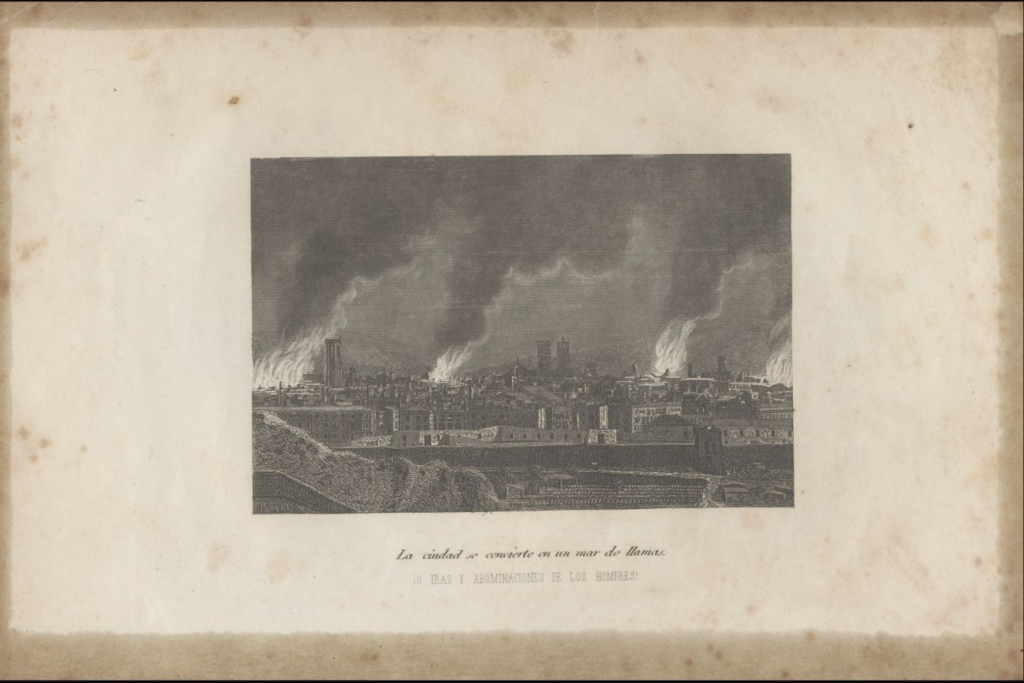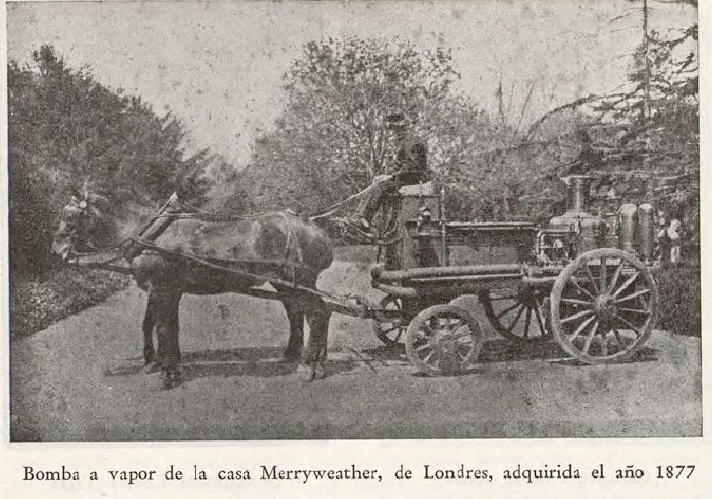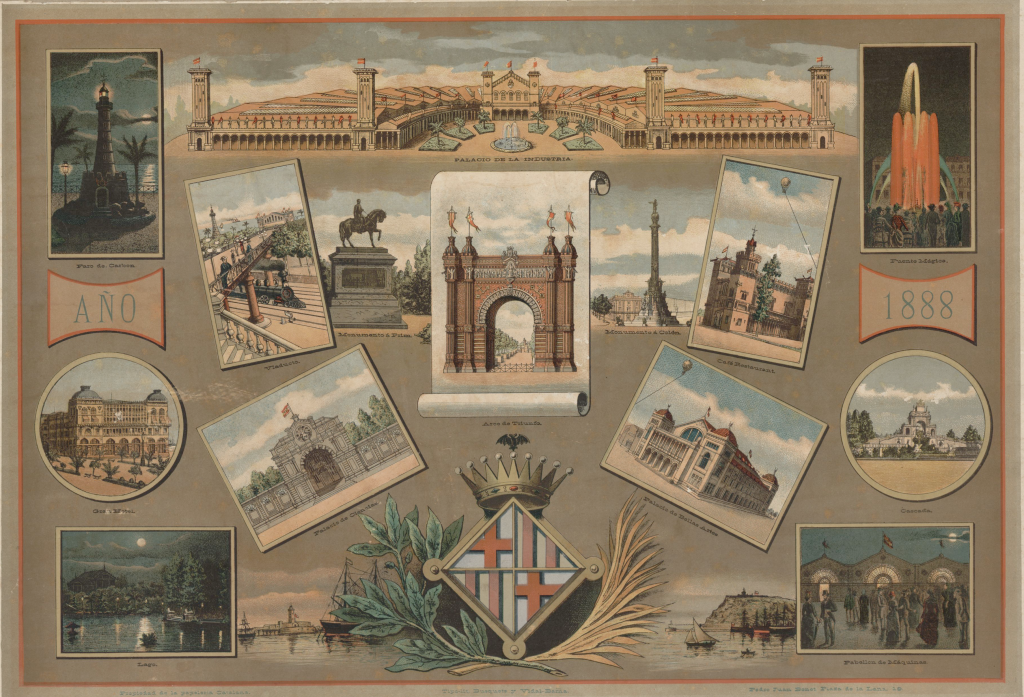The Barcelona Fire Service as it is known today was born in 1865 when the City Council of Barcelona assumed the Fire Company, created years ago by the Society of Mutual Insurance against Fires. Long before, however, the city already had different organizations, usually formed by union volunteers who, in a more or less successful manner, intervened in the extinction of fires.
Read the story
Construction workers, carpenters and locks of each District were called by the “ring of fire”, the insistent ringing of bells, and were directed in the operation by the first councilor of works of the City Council that reached the site of the accident . The neighbors also intervened but the lack of means (buckets, a manual bomb and some stairs), the little preparation and the city’s own urban planning – with narrow streets, small, tight houses and industries within the urban center- made it very difficult to succeed in the interventions. The fire ended up extinguishing, but too often it dragged whole buildings, private properties and some lives.

Regulation of the Mutual Insurance Society of Barcelona 1836
To try to minimize the damage of fires, the Society of Mutual Insurance against Fire, a philanthropic organization that was driven by property owners and members of the municipal government, was established in 1835. The burning of Convents of the Night of Saint James in 1835 gave the final impetus to the constitution of the Mutual Society, that together with the City Council of Barcelona created the first Fire Company.

Ramon Soley Cetó. Arxiu Històric de la Ciutat de Barcelona. 1835
The company consisted of 30 construction workers or maneuvers, 8 carpenters and 2 locksmiths at the orders of a commander and 4 chaplains. It had a budget of 1,000 Catalan pounds per year plus monthly installments and daily expenses for each fire. The architect Josep Mas i Vila was the first leader.

Gravat procedent de La Ilustración. Periódico Universal (Madrid), 7, 15 febrer 1851, p. 49. La descripció dels fets a la mateixa revista, número 6, 8 febrer 1851, p. 41-42. Arxiu Històric de la Ciutat de Barcelona. 1851
In 1851, when the Mutual Society was fully responsible for the Fire Company, the architect Antoni Rovira i Trias was appointed head of Fire. In 1856, Rovira published the Manual for the Stopping of Fire, a treatise on theorizing the best way to organize the fire service management based on his own experience and taking as a reference the organization of the fire brigade companies in France. In this theoretical treatise on the management of the fire service Rovira indicates that the management can be municipal, military or private – three models that the city had experienced – but strengthens the municipalization of the service. In that sense, Rovira emphasizes the need for municipal governments to commit themselves to the extinction of the fire through a well-prepared, equipped and targeted company and in a prevention policy, especially in the most popular areas such as theaters and party halls. Six years later the flames completely destroyed the Teatre del Liceu.

Sanz, F. Arxiu Històric de la Ciutat de Barcelona. 1861 Incendi del Gran Teatre del Liceu el 9 d’abril de 1861. Les flames surten de darrere l’edifici. En primer terme, els bombers apagant el foc.
The fire of the Liceu Opera Hall in 1861 will be a turning point and will start a decade of change and modernization in the city and in the service of Firefighters: Barcelona demolishes its walls and the city breathes and widens with the Cerdà Plan. The City Council collects the insistent requests and civic proposals for the regulation of the fire service and in 1865, the Fire Brigade is definitively located in order to protect the safety of the citizens of Barcelona.

Imatges i records, p. 18
This is the beginning of a stage of innovations and advances in the Firefighters Service of Barcelona that will become a benchmark and a model both national and internationaly.

Bonet, Pere Joan. Arxiu Històric de la Ciutat de Barcelona. 1888
The celebration of a new International Exhibition in Barcelona in 1929 was decisive in boosting the modernization of the Fire Brigade. Taking advantage of an extra budget, the City Council acquired a full fleet of 14 cars from the German house Magirus.
At the beginning of the 19th century, Barcelona did not have a professional fire service. As in other cities, the fires were suffocated by construction workers, locksmiths, carpenters and volunteers led by the councilor of constructions. The lack of a prepared team implied that only the small fires could be extinguished without great losses while the majority of fires ended with the collapse the building.
In 1926 a municipal regulation was approved to pay small salaries, wages and allowances and to give little equipment to a 25-man firefighting brigade led by the municipal construction master. Despite of the goodwill of the firefighters, their abilities were scarce . In the following years the regulations followed until 1933 when the General captain of Catalonia, Manuel de Llauder, recovered the proposal to constitute a company of mutual insurance against fires that finally was founded in 1935 with the name of Sociedad de Mútuos Seguros contra incendios that was known as “La Mútua”.
La Mutua had a philanthropic character and together with the City Council of Barcelona they created the first Bombers company in Barcelona. The company consisted of 30 pallets or maneuvers, 8 carpenters and 2 chains at the command of a commander and 4 chaplains. It had a budget of 1,000 Catalan pounds per year plus monthly installments and daily expenses for each fire. The architect Josep Mas i Vila was the first leader.
In 1851, when La Mútua was fully responsible for the Fire Company, the architect Antoni Rovira i Trias was appointed head of Firemen. In 1856, Rovira published the Manual for the Stopping of Fire, a treatise on theorizing the best way to organize the fire service management based on his own experience and taking as a reference the organization of the fire brigade companies France. In this theoretical treatise on the management of the fire service Rovira indicates that the management can be municipal, military or private – three models for which the city had passed – but in defense of municipalization. The City Council collects the insistent requests and civic proposals for the regulation of the fire service and in 1865, the Fire Brigade is definitively located in order to protect the safety of the citizens of Barcelona.
The attack on Hipercor (Barcelona based popular mall) on Avenida Meridiana on June 19, 1987 was the most tragic accident of the decade. It was caused by ETA terrorist organization after leaving a car bomb in the underground of the crowded mall. The attack caused 15 dead and 28 seriously injured. The firefighters had many difficulties in performing the rescue tasks due to the large amount of smoke that filled the parking lot and that caused suffocation of many victims. It was the worst terrorist attack ever in Barcelona and was a real shock for citizens.
On Christmas of 1932 a fire was declared in El Siglo Warehouses in the high part of the Ramblas. These stores, the largest and most popular of the time, were considered by the firefighters as one of the most dangerous buildings to face in case of fire, like the Liceu, the Teatre Principal or other public places where many people could be concentrated and there were large quantities of flammable materials. For that reason, the firefighters had raised the planes of the different floors of the building a few years before the location of the nearest hydrants.